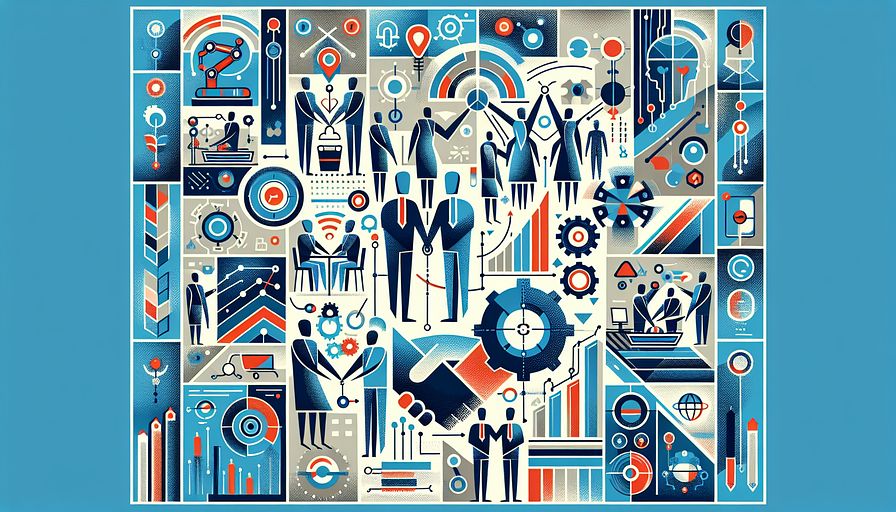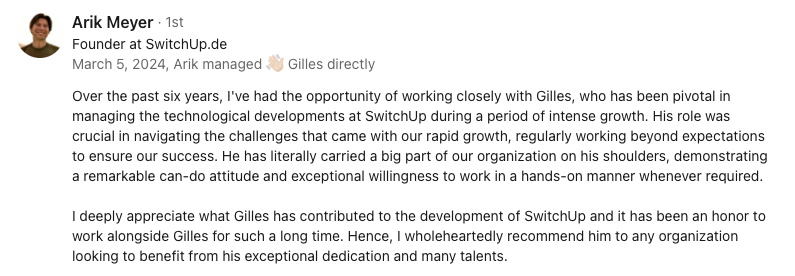Abstract:
"Cobots: Transforming Human-Robot Collaboration in Technology and Engineering" Collaborative robots, or cobots, are revolutionizing robotics automation by working alongside human employees in various tasks. Technology and engineering leaders, such as CTOs and Directors, are encouraged to embrace cobot deployment to address labor shortages, enhance safety, and optimize processes. Cobots offer opportunities for human-robot collaboration, improve workflows, and empower engineers to innovate. Safety is a top priority, with cobots designed with advanced safety features and workplace guidelines. Embracing cobots will shape the future roles of technology and engineering leaders, requiring new strategies to integrate cobots effectively for sustainable growth in a changing technological landscape.
Cobots: Transforming Human-Robot Collaboration in Technology and EngineeringThe Emergence of Cobots and Robotics Automation
Collaborative robots, or cobots, represent the next generation of robotics automation in technology and engineering. Distinct from traditional industrial robots, cobots are designed to collaborate directly with human workers, enhancing productivity, safety, and flexibility in various applications. These nimble machines learn and adapt to their environment, performing tasks that range from assembly and material handling to testing and inspection.
CTOs, Directors of Technologies, and Directors of Engineering: Embracing Cobot Deployment
For CTOs, Directors of Technologies, and Directors of Engineering, cobot deployment involves understanding the unique value proposition of these machines. Cobots enable organizations to augment human capabilities, creating an environment where humans and robots work in harmony. By embracing cobot technology, these leaders can address challenges associated with labor shortages, workplace safety, and process optimization.
In technology and engineering, cobots provide numerous opportunities for human-robot collaboration, from manufacturing and assembly lines to research and development environments. Their adaptability allows organizations to implement cobots quickly and cost-effectively, resulting in streamlined workflows, improved product quality, and reduced lead times. Furthermore, cobots empower engineers to design and implement innovative solutions, fostering a culture of creativity, continuous improvement, and technological advancement.
Cobot Safety: A Key Focus for Technology and Engineering Leaders
As cobots continue to gain prominence in technology and engineering, cobot safety remains a top priority for CTOs, Directors of Technologies, and Directors of Engineering. Cobots are built with advanced safety features, including force-limited joints, integrated sensors, and emergency stop functions. These elements ensure safe human-robot interaction while minimizing the risk of accidents and injuries.
Moreover, cobot safety extends beyond the machines themselves, encompassing the broader work environment. Developing comprehensive safety guidelines, implementing regular training programs, and fostering open communication between humans and robots contribute to a culture where cobot safety remains at the forefront. By empowering their teams with the knowledge and skills necessary to collaborate effectively with cobots, technology and engineering leaders can unlock the full potential of human-robot collaboration and drive their organizations toward a safer, more productive future.
A Cobot-Enhanced Future: Bolstering the Roles of CTOs, Directors of Technologies, and Directors of Engineering
As cobots become increasingly vital to technology and engineering organizations, the roles of CTOs, Directors of Technologies, and Directors of Engineering will continue to evolve. These leaders will need to develop new strategies and frameworks to integrate cobots effectively, optimize workflows, and ensure sustainable growth. By embracing cobots and fostering human-robot collaboration, they can create a competitive edge and position their organizations for long-term success in an ever-changing technological landscape.
You might be interested by these articles:
- Optimizing Collaboration with Cobots
- Enhancing Teamwork with Cobots
- Cobots: Boosting Startup Growth and Innovation





